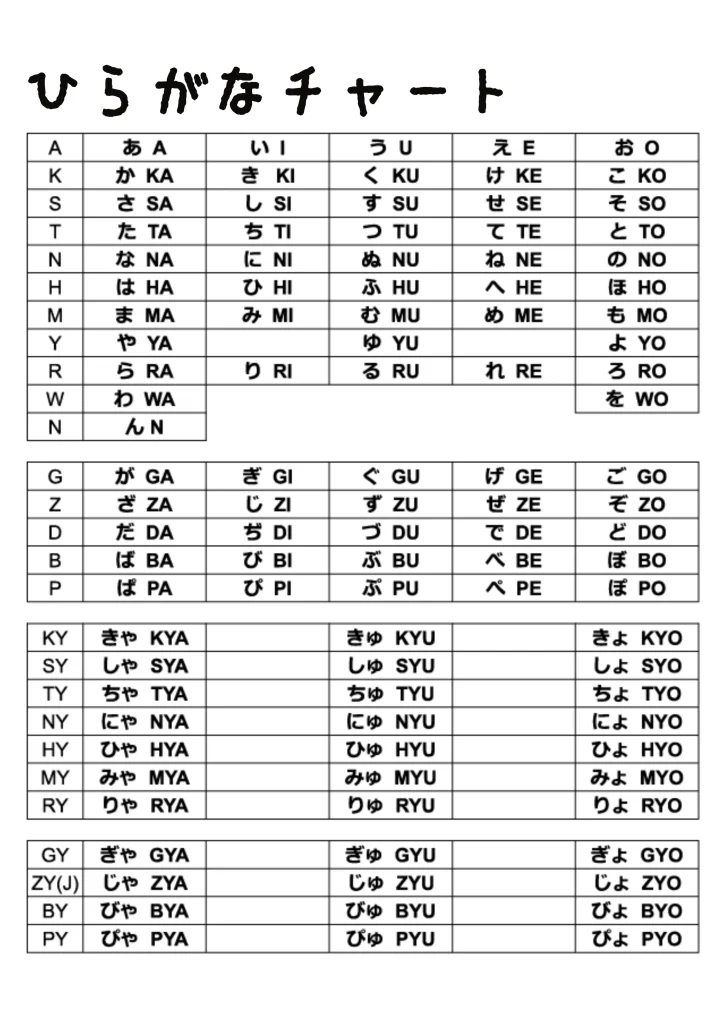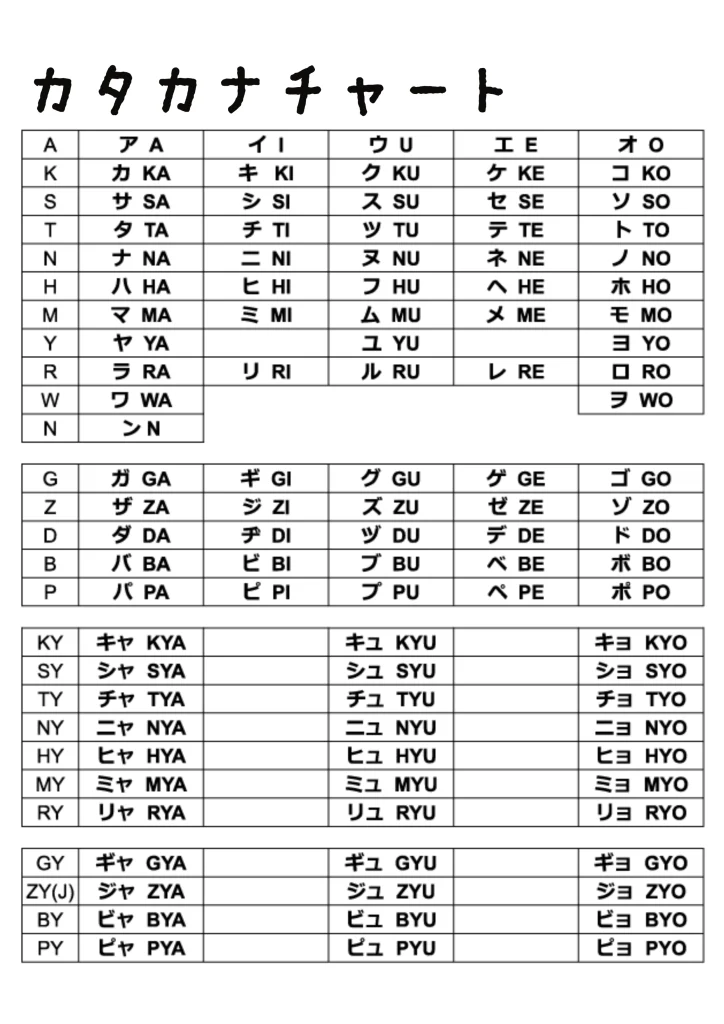Learning Japanese Otaku
Don't study alone, We are here
Contents
Learn Japanese characters
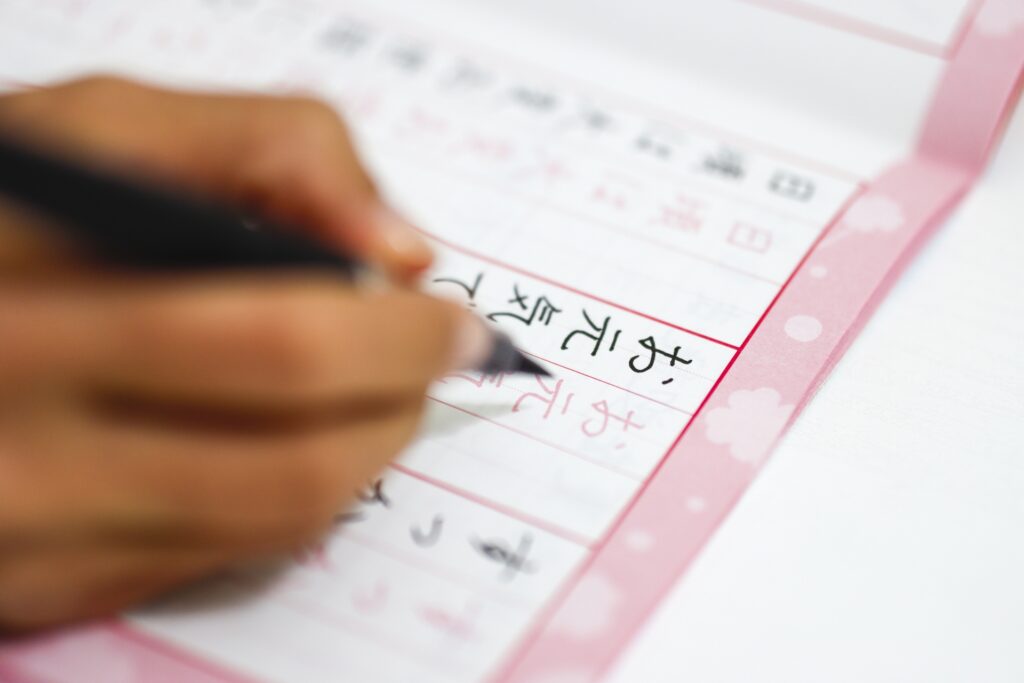
What is Hiragana?
Hiragana is something that plays the role of an alphabet in the Japanese language. They originated from Chinese Kanji characters, which were introduced from China, but the Japanese have modified them into letters that are easier to write. (In particular, the simplification of kanji with many strokes may have made them easier to write.) As you can see in the chart below, the original Kanji characters have been simplified.
This is the origin of hiragana.
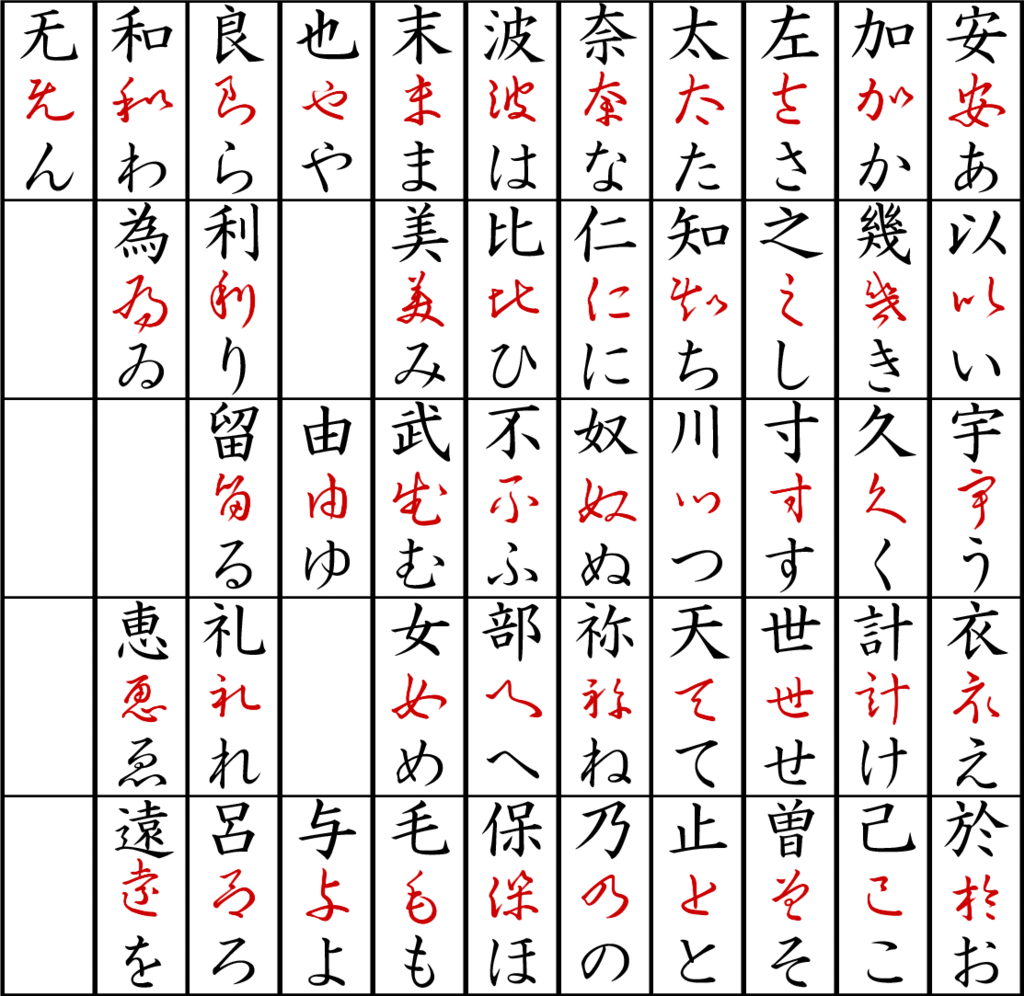
What is Katakana?
Katakana has the same 50 syllables as Hiragana. Pronunciation is also the same. The only difference is the shape of the characters. Hiragana refers to things that have existed in Japan since ancient times, while katakana is used to refer to things introduced from overseas (hamburgers, computers, TV, beer). Keep in mind that things written in katakana originated overseas!
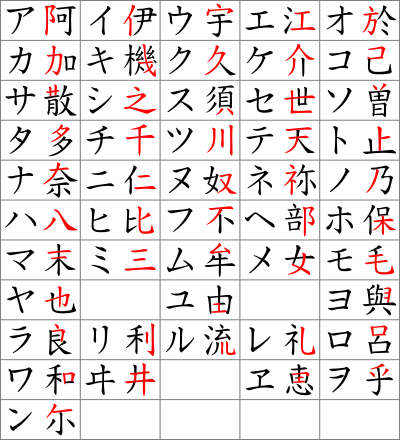
What is Kanji?
Kanji is a complex character with a large number of strokes. Kanji itself is said to represent events and shapes, and the meaning can be understood just by looking at the kanji. For example, there is the kanji character for “川,” which means “river. Can you somehow imagine the image of flowing water? Kanji characters have original images, so you may speed up your learning by memorizing them with images.
It is said that there are now more than 100,000 kanji. However, no Japanese person can remember all of them. It is estimated that there are 2,000 to 3,000 commonly used words, so you need to study those kanji first.
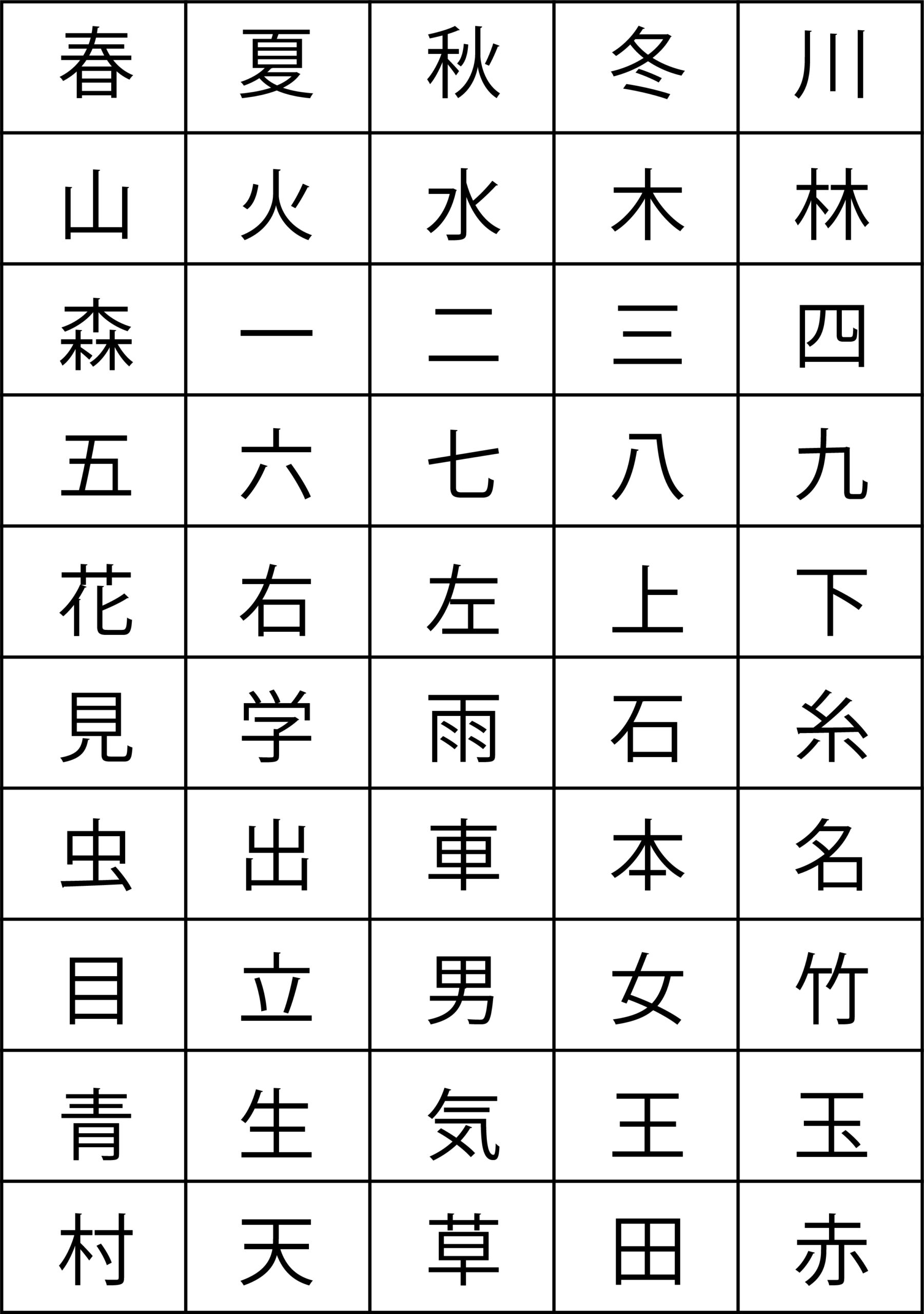
How to study Japanese characters
Linking sound and text
The first thing that a learner of Japanese must learn to do is to link the image of the written word with the sound of the voice. Without a link between the image of the characters and the voice, smooth communication will be difficult. In short, if you can study and understand hiragana, you will have an advantage in speaking and listening to Japanese. Have people who study and speak English ever studied phonics? If you have studied it, you can probably imagine what it is like.
Fortunately, Japanese pronunciation is simple.
Japanese has five vowels and 14 consonants. The pronunciation does not change when letters are connected to each other as in English. Also, the pronunciation does not change even if two vowels are aligned. Therefore, it is relatively easy to learn about the connection between letters and sounds!
For this reason, we recommend learning hiragana and katakana first. These two are the basis of the development of the Japanese language, and without a proper understanding of them, it will be difficult to learn kanji. This is because kanji often contain two or more characters in a single letter. (For example, the character for “川” (river) is “KAWA” and the word it occurs in has two characters.)
More and more people are becoming interested in the Japanese language because of Japanese anime. They will have no problem learning the language basically as it is, although some of them have characteristic language like the characters in the anime (Naruto, Goku). As a Japanese person, I can recommend using anime and other media to help you become familiar with the Japanese language.
Read a simple sentence out loud
If you have some understanding of hiragana and can pronounce it, let’s try reading sentences next. Of course, if you don’t understand the words, you won’t understand the meaning, but at this stage, concentrate only on reading and pronouncing the hiragana. The only way to find out the meaning of a word is to look it up each time. This is a difficulty that applies to all language learners.
You might think: “I’m not sure what I’m supposed to be doing. Isn’t it too early to say it out loud? But I think that’s best coming from someone whose first language is Japanese. Languages can be roughly divided into reading, listening, writing, and speaking. Japanese seems to be relatively easy to learn if you only listen. (It is really difficult to understand complex sentences.) Writing and reading, on the other hand, are very difficult, because there are so many words to learn in Japanese: hiragana, katakana, and kanji. Also, considering that you can learn more by talking with Japanese people, I think it would be a good idea to learn to speak and listen first.
Listen to conversations between Japanese people.
This is similar to watching animation. However, a conversation is a conversation in which slang and other words may be used in a variety of ways. When Japanese people say “KUSA,” they generally mean “Kusa,” which is Japanese internet slang for “WWWWW” (grass grows). It has the same meaning as “lol” in English-speaking countries, because it is the same reading as “laugh” in Japanese. The fastest way to learn this kind of slang is to listen to conversations between Japanese people.
Hiragana and Katakana chart
